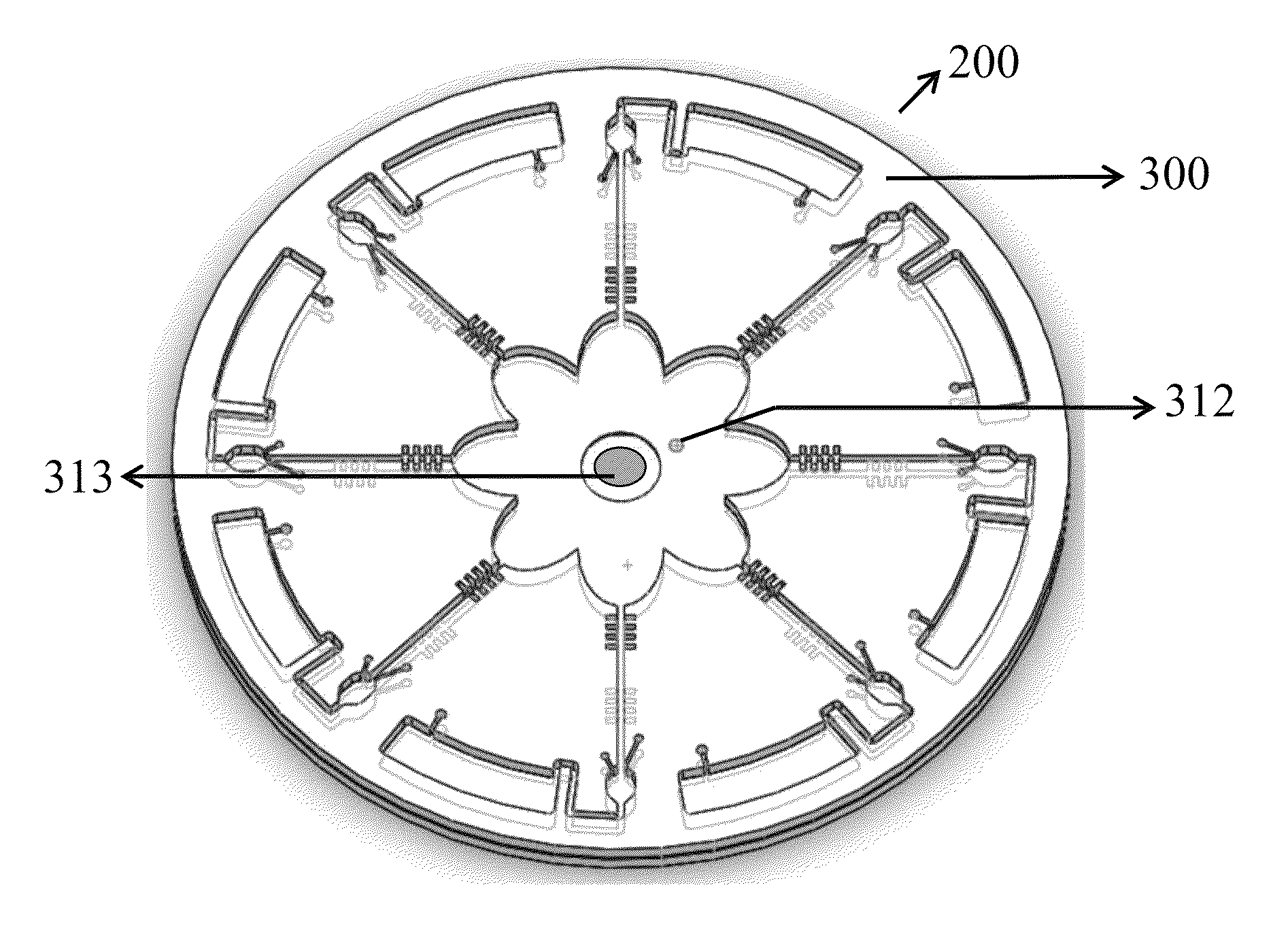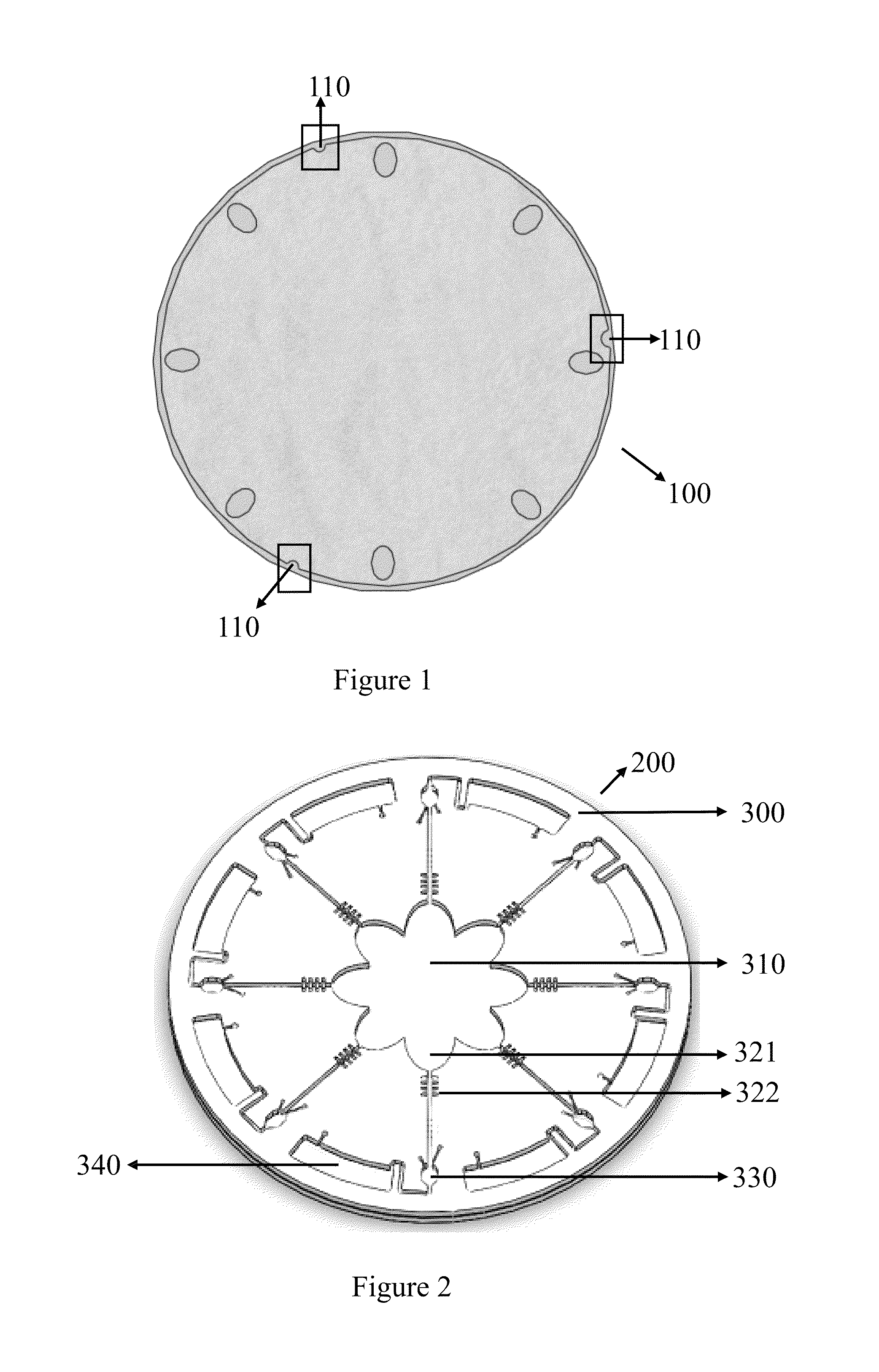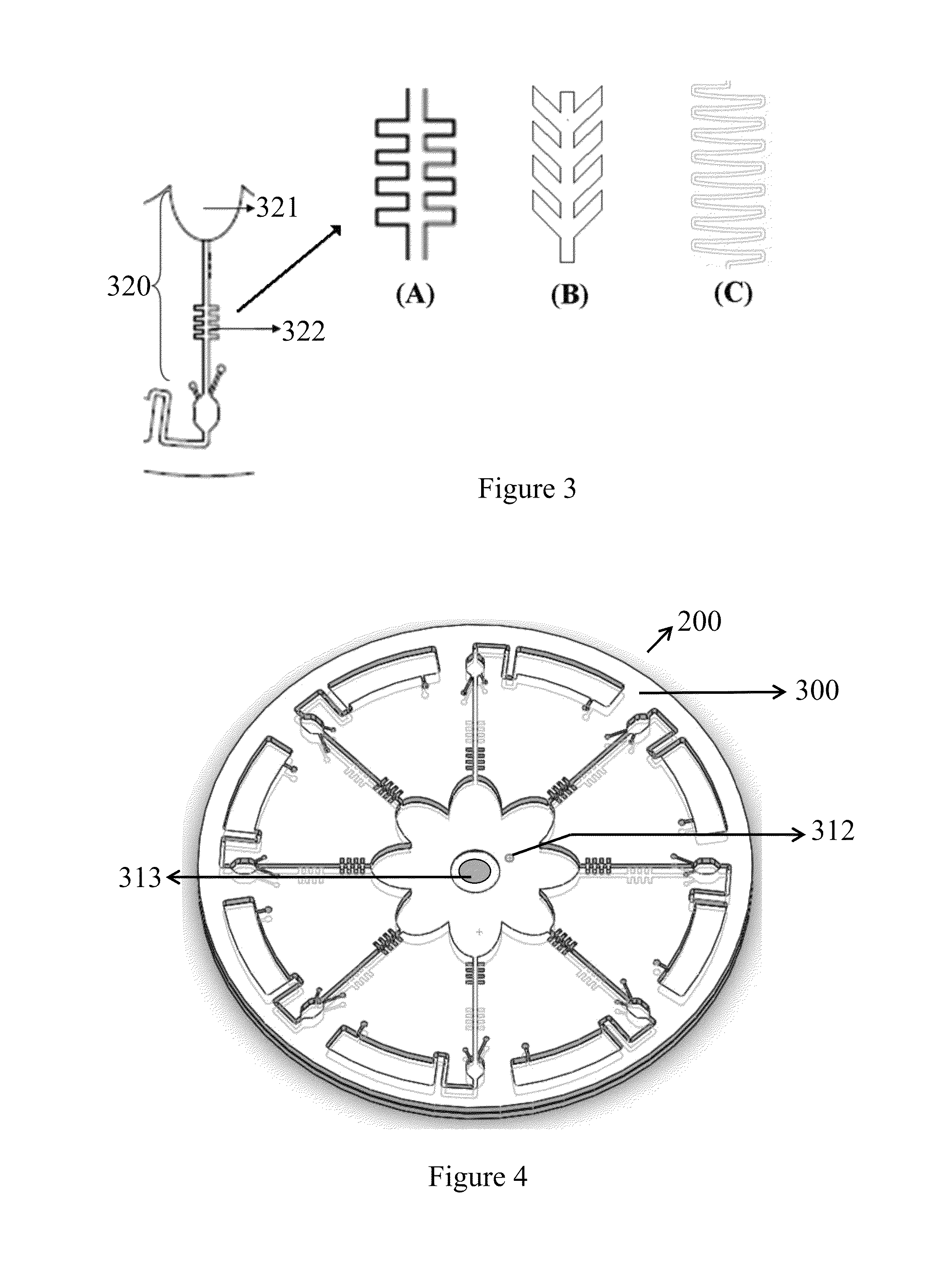Apparatus and methodology to carry out biochemical testing on a centrifugal platform using flow splitting technique
a centrifugal platform and flow splitting technology, applied in the direction of positive displacement liquid engines, laboratory glassware, instruments, etc., can solve the problems of wasting time but manpower, affecting the quality of biochemical testing, and consuming a lot of time to complete the whole procedure, so as to avoid contamination between the reagents, high rotational speed, and the characteristic of obstructing the liquid can be regained
- Summary
- Abstract
- Description
- Claims
- Application Information
AI Technical Summary
Benefits of technology
Problems solved by technology
Method used
Image
Examples
Embodiment Construction
[0036]The present convention is in accordance with embodiments, trying to solve the disadvantages of prior arts.
[0037]FIG. 1 is one of the embodiments to demonstrate a rotator platform 100. The rotator platform 100 comprises at least one device on the rotator platform corresponding to at least one notch 110. By the at least one notch 110, a microfluidic disc 200 is fixed on the rotator platform 100.
[0038]In the FIG. 2, the microfluidic disc 200 comprises a layer of microfluidic structures 300. From the center to the periphery of the layer of the microfluidic structures 300 comprising: an injection chamber 310, a splitting chamber 321, a flow-resistant element 322, at least one detection chamber 330, and at least one waste chamber 340.
[0039]At least one microfluidic channel 320 comprises the splitting chamber 321 and the flow-resistant element 322. The flow-resistant element 322 has choices of microvalve with round shape or fish-bone shape the as shown in FIG. 3A. If reagents compris...
PUM
| Property | Measurement | Unit |
|---|---|---|
| time | aaaaa | aaaaa |
| frequency | aaaaa | aaaaa |
| volume | aaaaa | aaaaa |
Abstract
Description
Claims
Application Information
 Login to View More
Login to View More - R&D
- Intellectual Property
- Life Sciences
- Materials
- Tech Scout
- Unparalleled Data Quality
- Higher Quality Content
- 60% Fewer Hallucinations
Browse by: Latest US Patents, China's latest patents, Technical Efficacy Thesaurus, Application Domain, Technology Topic, Popular Technical Reports.
© 2025 PatSnap. All rights reserved.Legal|Privacy policy|Modern Slavery Act Transparency Statement|Sitemap|About US| Contact US: help@patsnap.com



